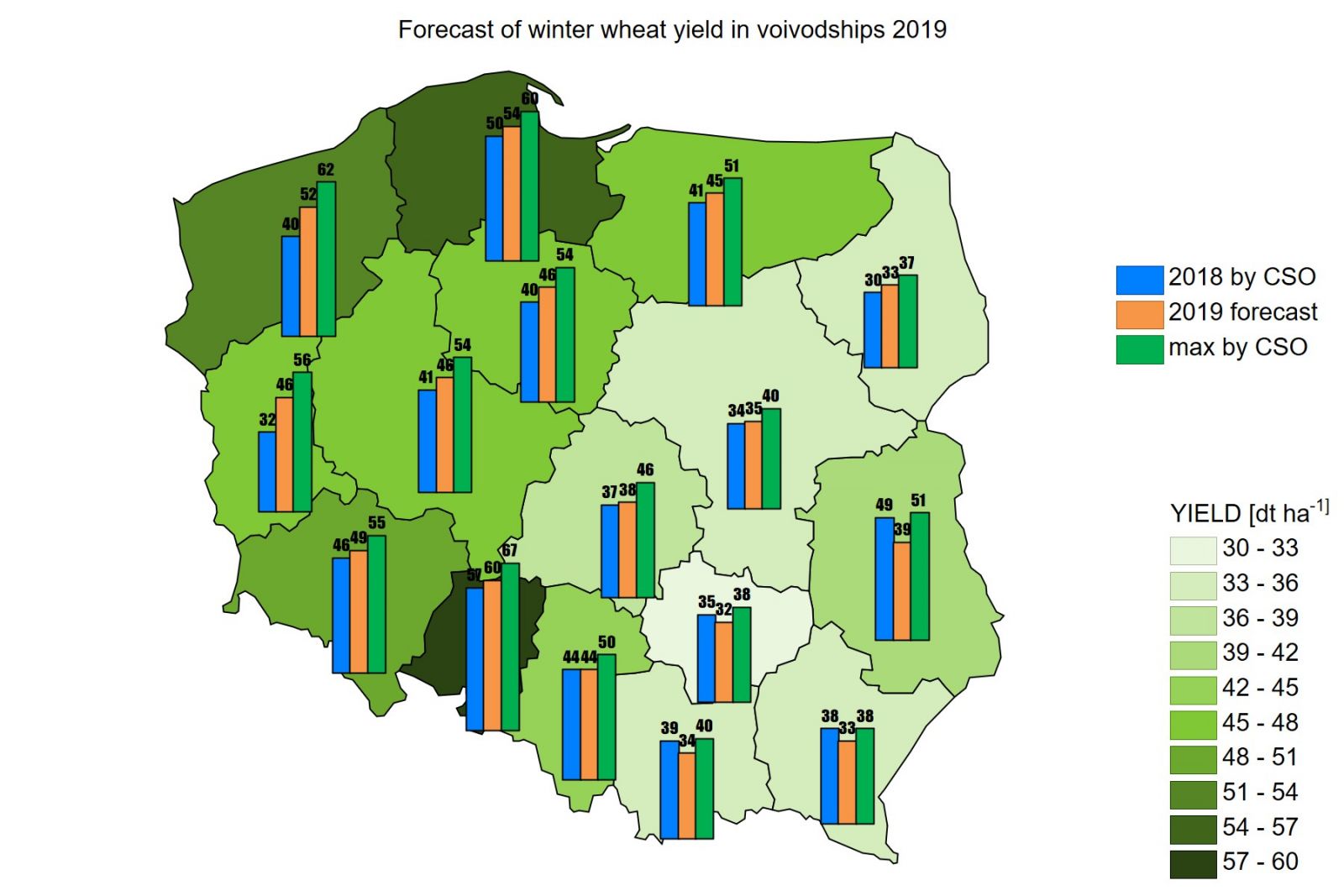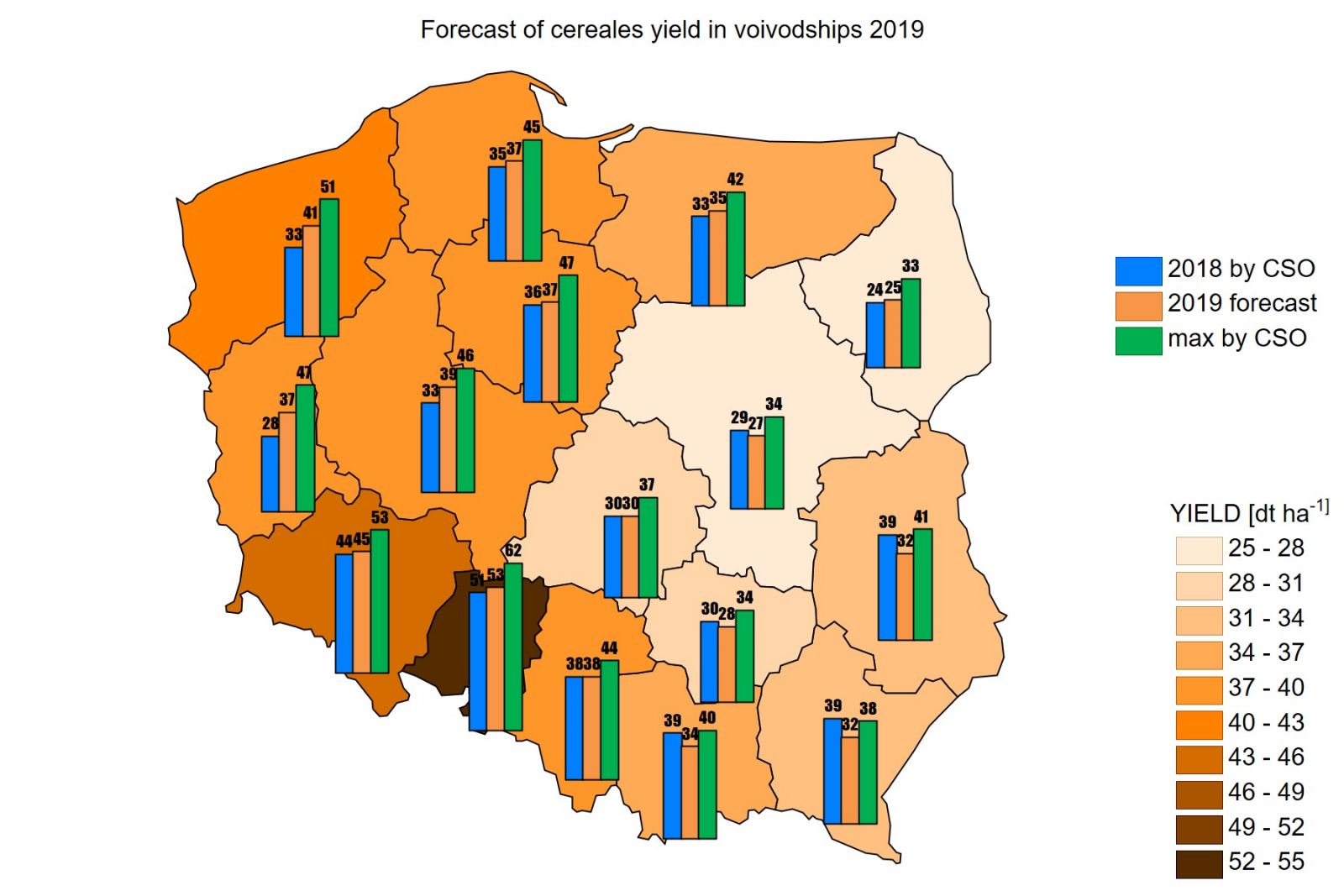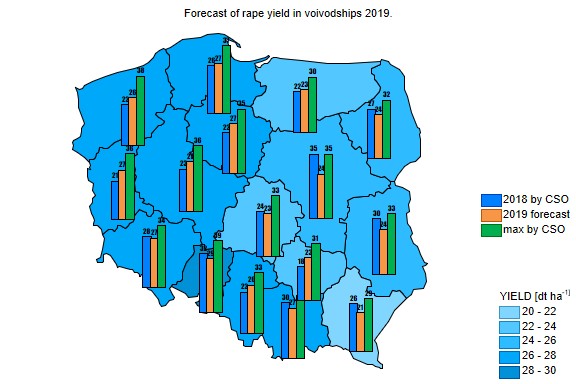Cereales yields forecasts better than in 2018.
Remote Sensing Centre monitors crop conditions and hazards during growing season using database of NOAA/AVHRR satellite images. These images were used for preparing models which apply surface radiation temperature for assessing intensity of drought within agricultural land. In 2019 in central and west Poland high temperatures and low rainfalls are observed since the beginning of June, which results in lack of sufficient soil moisture. The area affected with drought was estimated up to 70% while 50% is related to extreem drought.
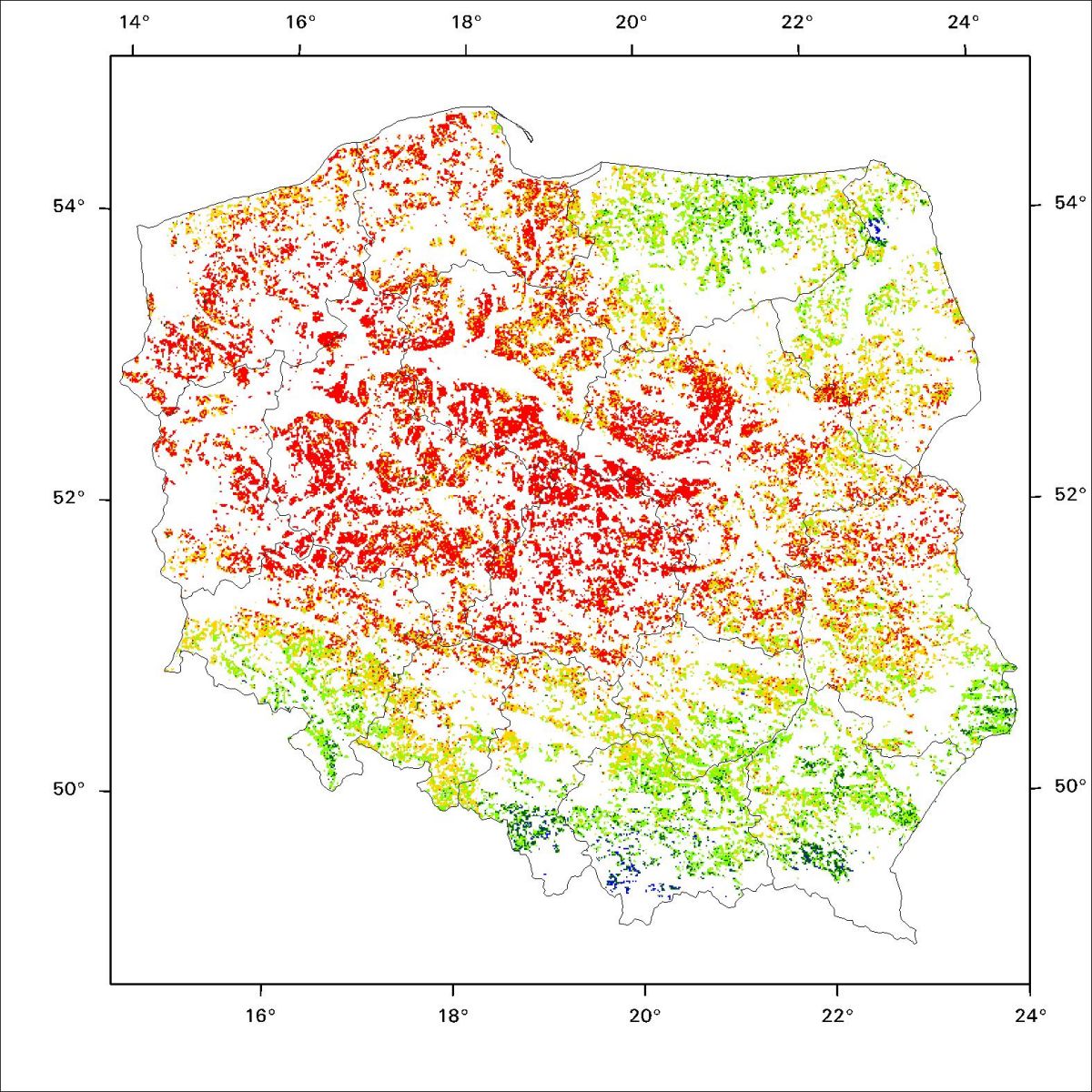
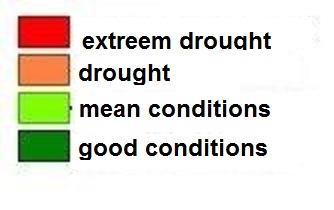
We've monitored the development of drought from the start of growing season. Every 10 days we've published the actual map with the information about drought at the agricultural regions. Resources on agricultural moisture conditions 2019 you can find here: Agricultural drought monitoring.
As a result of prolonged drought in the crusial period of rape and cereales vegetation the yields of them will not be high this year according to our models. Counting on average, the decrease of cereales yields in relation to the local potentials will be 18%, winter wheat 14% and rape even up to 25%. Anyway, this forecasts are higher than results in the previous year pulished by CSO. We expect the yield of cereales 2% higher and winter wheat 5% higher than in 2018 on average. In the south-east part of Poland where last year the yields were relatively high, now will be lower; but in north-west where in 2018 also the drought dominated and the yields were extreemly low, now we expect better situation. Maps below illustrate cereales, winter wheat and rape yield forecast on average in voivodeships in Poland. The background color is the local yield in dt/ha, the bars compare the 2018 results and the maximum from 2003-2017 by CSO with this year prognosis. Other forms of results we present in the section: Yield forecast

